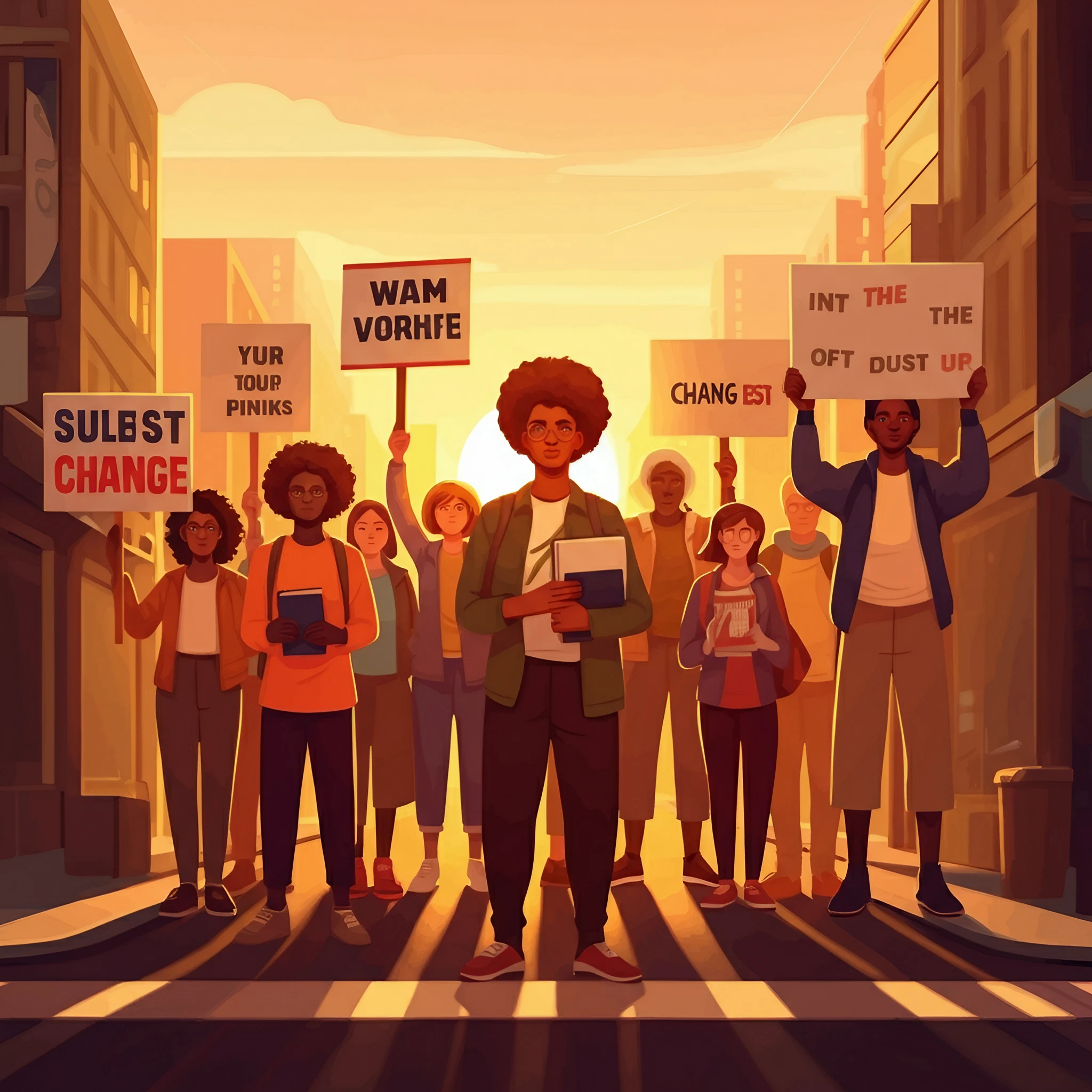Change is often birthed from moments of resistance and the tireless pursuit of progress. Throughout history, individuals and communities have stood up to unjust systems, policies, and norms that held them back. But what fuels this drive? What motivates people to struggle for change, even against overwhelming odds?
This article unpacks the main factors driving people to fight for change, explores the diverse ways in which they’ve taken action, and provides concrete examples of the impact they’ve made.
1. A Deep Desire for Justice
At the core of many struggles lies a profound desire for justice. When individuals witness or experience inequality, discrimination, or oppression, it sparks a fervent drive for fairness. The struggle for civil rights in the U.S. is a prime example. Activists like Martin Luther King Jr. refused to accept racial injustice and fought tirelessly for equality, motivated by a vision of a just society.
Key Driver: Witnessing unfairness triggers a moral response, urging individuals to take action for a fairer world.
2. Personal Experience and Empathy
Personal experiences can be powerful motivators. Those who face adversity firsthand often channel their struggles into actionable change. For instance, Malala Yousafzai’s experience of being denied an education by the Taliban evolved into a larger movement advocating for girls’ education worldwide.
Empathy also plays a role. People who may not face oppression themselves often join struggles because they deeply resonate with others’ pain and challenges, believing in a collective responsibility for progress.
Key Driver: Personal pain or a connection to the pain of others compels people to transform emotions into advocacy for change.
3. Hope for a Better Future
Hope serves as a beacon for changemakers. While challenges may seem daunting, the belief in a better tomorrow drives their actions. Climate activist Greta Thunberg is an example of someone who, despite the bleak reality of climate change, continues to advocate for global environmental policy reform because she envisions a healthier planet.
Key Driver: Belief in the possibility of improvement motivates people to take risks and push boundaries for a better tomorrow.
4. Community and Shared Purpose
Movements are often fueled by the power of solidarity. Feeling part of a collective effort provides strength and reassurance that change is possible. Social movements like the LGBTQ+ rights movement or women’s suffrage demonstrate how shared goals can unite communities to fight tirelessly for equality, representation, and recognition.
Key Driver: A sense of belonging and purpose within a collective reinforces commitment to the cause.
5. A Sense of Duty or Responsibility
For some, the motivation to struggle for change stems from a sense of moral responsibility. They believe it is their duty to use their privilege, resources, or voice to uplift others. This sense of obligation often emerges in leaders or those with influence, like Nelson Mandela, who fought for the abolition of apartheid despite the personal risks.
Key Driver: The belief in duty over personal safety or comfort sparks action dedicated to uplifting society.
6. Outrage at the Status Quo
Anger at harmful decisions, policies, or behaviors can galvanize people. This outrage is channeled constructively into protests, campaigns, and reforms. Events like the Arab Spring demonstrated how anger at corrupt regimes united millions across countries to demand change.
Key Driver: A refusal to tolerate existing injustices drives people to challenge authority and demand reform.
7. The Ripple Effect of Inspiration
Sometimes, seeing others fight for change inspires action. Movements often grow when stories of resilience and courage spread, fostering hope and belief in an individual’s ability to make a difference. Stories shared during movements like Black Lives Matter ignite waves of advocacy across cities, countries, and continents.
Key Driver: Witnessing others’ bravery inspires people to believe in their power.
Examples of Inspiring Struggles for Change
- Rosa Parks and the Montgomery Bus Boycott: Parks’ refusal to give up her seat to a white passenger was driven by her desire for racial equality. Her quiet but firm resistance ignited a larger movement that reshaped the American Civil Rights Movement.
- Greta Thunberg and Fridays for Future: From a solitary school strike to a global movement, Greta’s unwavering determination has inspired millions to take action for climate justice.
- #MeToo Movement: Sparked by collective anger and a shared desire for a safer world, the #MeToo movement gained momentum as survivors came forward to challenge systemic issues of








